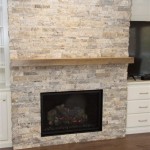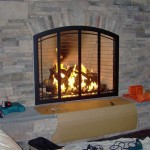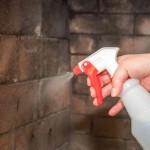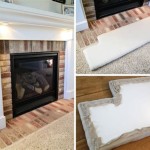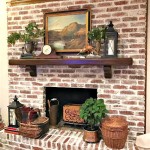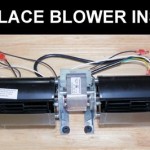How to Install a Fan in Your Gas Fireplace
Adding a fan to your gas fireplace can significantly enhance its efficiency and heat distribution. This simple upgrade can circulate warm air throughout the room, making your fireplace a more effective heating source and enhancing your overall comfort. However, installing a fan requires some technical knowledge and a good understanding of safety precautions. This article will guide you through the process step-by-step, providing all the necessary information to ensure a successful installation.
Step 1: Determine Fan Compatibility and Requirements
Before purchasing a fan, it's crucial to ensure compatibility with your existing gas fireplace. Different fireplaces have varying specifications, and the fan needs to be a suitable match. Consider the following factors:
- Fireplace Type: Different types of gas fireplaces may have different mounting options or airflow patterns.
- Fireplace Size: The fan's size and power output should be appropriate for the size of your fireplace and the room it heats.
- Fireplace Installation: Check if your fireplace has a dedicated vent for the fan, or whether you need to install one.
- Fan Size and Type: Consider the size and type of fan that would best suit your needs. Different fans have different power levels and airflow patterns.
- Fan Installation Requirements: Check the fan's documentation for specific installation requirements, such as the minimum distance from the firebox or any necessary mounting hardware.
Once you have determined the appropriate fan for your fireplace, you can obtain the necessary tools and materials for installation.
Step 2: Gather Tools and Materials
Before you begin installation, ensure you have all the necessary tools and materials. These may vary depending on the specific fan model and your fireplace design, but typically include:
- Fan Unit: The fan unit itself, including the motor, fan blades, and mounting hardware.
- Screwdrivers: A variety of screwdrivers to suit the screws used for mounting the fan and securing connections.
- Drill: A drill with appropriate bits for drilling holes in the fireplace or vent.
- Measuring Tape: To accurately measure the installation location and ensure proper spacing.
- Level: To ensure the fan is mounted straight and level.
- Safety Glasses: To protect your eyes from debris during installation.
- Work Gloves: To protect your hands from sharp edges or hot surfaces.
- Electrical Tape: To secure wire connections.
- Wire Strippers: To strip insulation from electrical wires.
- Optional: A stud finder to locate studs in the wall for additional support, if needed.
Step 3: Installing the Fan
The detailed installation process will depend on the specific fan model and your fireplace design. However, the general steps are as follows:
- Locate the Installation Spot: Consult the fan's instructions for the recommended placement, often near the top of the fireplace or in a dedicated vent.
- Prepare the Installation Area: Clean the installation area to ensure a secure and level mounting surface.
- Mount the Fan: Attach the fan to the fireplace using the provided mounting brackets or other hardware, ensuring it is securely mounted and level.
- Connect Wiring: Connect the fan to the power source, following the fan's wiring diagram and taking care to properly insulate connections.
- Secure Connections: Secure all connections and ensure they are snug and properly insulated.
- Test the Fan: Turn on the fan and verify that it is working properly. Make sure it is running smoothly and distributing air efficiently.
It's important to double-check all connections and ensure proper insulation before using the fireplace. If you are unsure about any part of the installation process, consult a qualified professional.
Step 4: Safety Precautions
Installing a fan in your gas fireplace requires careful adherence to safety precautions to prevent accidents and ensure proper functioning. Always:
- Disconnect Power: Before working on any electrical component, turn off the power supply to your fireplace and fan at the circuit breaker.
- Avoid Heat Sources: Ensure the fan is installed at a safe distance from any heat sources, such as the firebox.
- Use Proper Insulation: Use electrical tape or wire nuts to insulate all electrical connections properly.
- Follow Instructions: Always follow the manufacturer's instructions for the fan model you are installing.
- Seek Professional Help: If you are unsure about any part of the installation or have concerns about your safety, consult a qualified electrician or fireplace professional.
By following these steps and adhering to safety precautions, you can successfully install a fan in your gas fireplace and enjoy its benefits. Adding a fan can enhance your fireplace's efficiency and create a more comfortable and inviting atmosphere in your home.

Installing A Fireplace Blower Gfk4 Gfk4a In Heatilator Natural Gas

How To Choose And Install A Gas Fireplace Blower Kit

Noisy Gas Fireplace Blower Here S How To Replace It Diy

How Home Gas Fireplace Fan Blowers Work Montigo

Fbk 250 Fireplace Blower Kit Installation

Do Gas Fireplaces Need A Blower Fireplace Tips

Installing A Fireplace Blower Gfk4 Gfk4a In Heatilator Natural Gas

Fireplace Efficiency Blowers And Why You Should Have One

Gas Fireplace Blower Fan Installation

Fireplace Blowers Explained How Fans Work Regency
Related Posts

